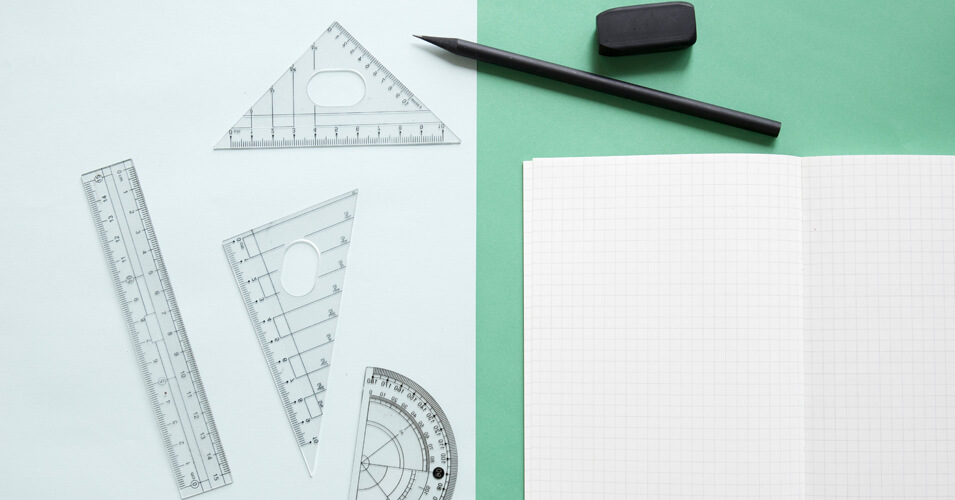Coordinate Geometry Questions and Answers

If (2, 0) is a solution of the linear equation 2x + 3y = 5, then the value of k is:
(A) 2
(B) 4
(C) 6
(D) 5
Correct Answer : B
If a linear equation is of the form x = k, where k is a constant, then graph of the equation will be
(A) a line making positive acute angle with x - axis
(B) a line parallel to y - axis
(C) a line parallel to x - axis
(D) a line cutting both the axes
Correct Answer : B
The point Q(a, b ) is first reflected in y-axis to Q1 and Q1 is reflected in x-axis to (-5,3 ). The co-ordinates of point Q are
(A) (-5 , -3)
(B) ( - 5, 3 )
(C) ( 5 , -3 )
(D) ( 5, 3 )
Correct Answer : C
Point A (2, 1) divides segment BC in the ratio 2 : 3. Co-ordinates of B are (1, -3 ) and C are (4 , y). What is the value of y ?
(A) -8
(B) 7
(C) 8
(D) -7
Correct Answer : B
The graph of the equations 25x + 75y = 225 and x = 9 meet the point:
(A) ( 3, 0 )
(B) (0, 3)
(C) (0, 9)
(D) (9, 0)
Correct Answer : D
Point P is the midpoint of segment AB. Co-ordinates of point Pare (2,1) and point B are (11,5) Co-ordinates of point A are
(A) ( 6.5, 3 )
(B) ( 7, 3 )
(C) ( -7, -3)
(D) ( -6.5 , -3 )
Correct Answer : C
The length of the portion of the straight line 3x + 4y = 12 intercepted between the axes is :
(A) 4
(B) 7
(C) 5
(D) 3
Correct Answer : C
The area bounded by the lines x = 0, y = 0, x + y = 1, 2x + 3y = 6 (in square units) is
(A) $$2{1\over2}$$
(B) 3
(C) 2
(D) $$2{1\over3}$$
Correct Answer : A
What is the equation of the line whose y-intercept is -3/4 and making an angle of 45 ° with the positive x-axis?
(A) 4x - 4y = -3
(B) 3x - 3y = 4
(C) 4x - 4y = 3
(D) 3x - 3y = -4
Correct Answer : C
The graph of 3x + 4y - 24 = 0 forms a triangle OAB with the coordinate axes, where O is the origin. Also, the graph of x + y + 4 = 0 forms a triangle OCD with the coordinate axes. Then the area of ∆ OCD is equal to:
(A) $${2\over3}$$ of area of ∆ OAB
(B) $${2\over5}$$ of area of ∆ OAB
(C) $${1\over2}$$ of area of ∆ OAB
(D) $${1\over3}$$ of area of ∆ OAB
Correct Answer : D



